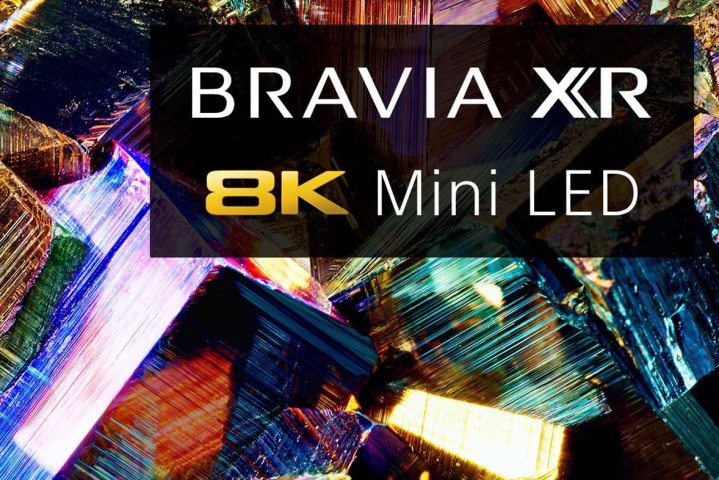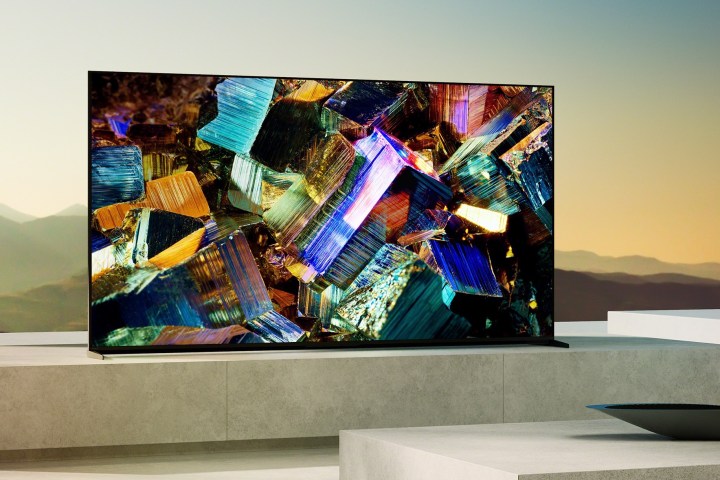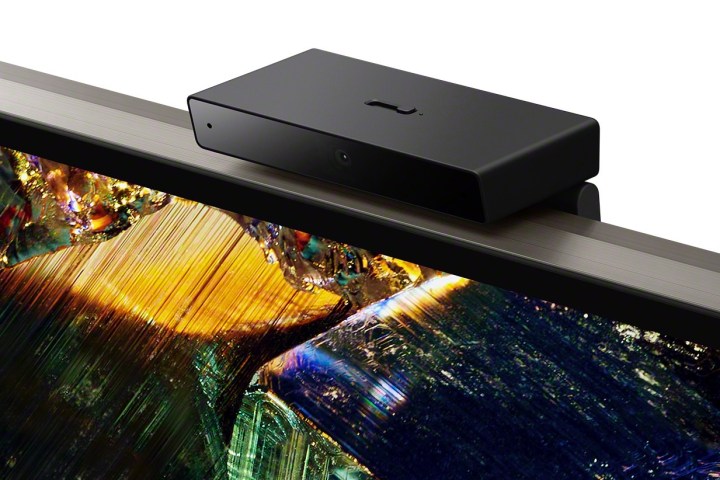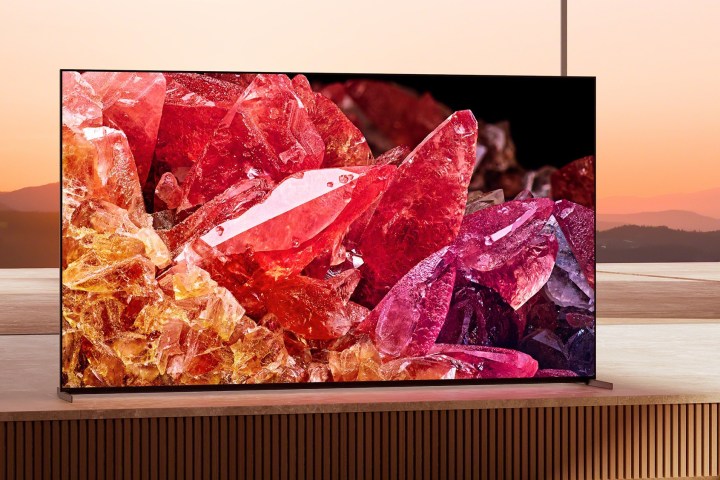For Sony’s TV ambitions, 2022 is looking like a banner year. Not only has it become the first company to bring a QD-OLED TV to market (the Sony A95K), but it is also branching out into mini-LED backlighting for its non-OLED flagship models, the 8K resolution Z9K, and the X95K, a 4K model. And naturally, Sony believes its version of mini-LED is better than the competition, thanks to a new version of its XR Backlight Master Drive and improvements to its Cognitive Processor XR technology.
Better mini-LED?

Why is Sony so confident that its min-LED TVs are better than TCL’s mini-LED models, Samsung’s Neo QLED TV, and LG’s mini-LED QNED models? Apparently, none of these competitors are applying sufficient algorithmic control over their backlights, according to Sony, which results in less-than-ideal picture quality.
As a quick reminder, mini-LEDs improve on conventional full-array local dimming (FALD) backlights by replacing hundreds of larger LEDs with thousands of much smaller LEDs, which should give mini-LED TVs great brightness but much better black levels and contrast control thanks to more control zones.
Sony claims that its XR Backlight Master Drive overcomes two problems associated with mini-LED: A tendency to see the shape of the mini-LED control zones due to their greater brightness, and a darker-than-necessary image when so-called “simple” algorithms reduce brightness as a way to compensate for the added blooming in mixed brightness scenes.
Basically, Sony thinks that the combined algorithms of its XR Backlight Master Drive and Cognitive Processor XR do a better job of exerting fine-tuned control over the mini-LEDs in its Z9K and X95K TVs, letting these models deliver on the advantages of mini-LEDs in a way that other companies haven’t been able to do. Are these claims hype or has Sony really cracked the code on mini-LED? We won’t know until we get one of these TVs in for a test drive, but Sony’s image processing is world-class and there are those who still think that the company’s 2016 Z-Series (which used the original Backlight Master Drive) has the best picture quality the company has ever achieved.
Master Series Z9K 8K Mini-LED Bravia XR

Sony’s 8K flagship gets the mini-LED treatment for 2022, along with tons of other features and technologies. It will be available in 75- and 85-inch screen sizes, and like all of Sony’s 2022 Bravia line, the smart TV interface will be powered by Google TV.
At the core of the Z9K is Sony’s Cognitive Processor XR, which has been updated with depth control, which identifies foreground objects and makes them sharper, while slightly de-emphasizing the background. It also does a better job with color by tweaking both luminance and saturation, which the previous version of the processor couldn’t do.
Onboard sound has also been improved with the latest version of Sony’s Acoustic Multi-audio, which integrates four frame-mounted tweeters, two midrange drivers, and two front-firing subwoofers for a 2.2 channel sound experience with a total of 85 watts of power. You’ll probably end up using a soundbar or home theater system with a big TV like this, but Sony makes a compelling case that you don’t need to do that to get decent sound.

Along with the A95K, the Z9K gets Sony’s new Bravia Cam, a camera module that mounts magnetically to the top of the TV and will eventually enable a host of features like gesture control, auto-dimming when people leave the room, and both sound and picture optimizations based on where people are sitting — something that Sony calls Ambient Optimization Pro. At launch, however, only video calling via Google TV apps is supported.

Sony is now all-in on HDMI 2.1. The Z9K has four HDMI ports:
- 18Gbps HDMI 2.0 port
- 48Gbps HDMI 2.1 port with auto low-latency mode (ALLM), variable refresh rate (VRR), and 4K at 120Hz
- A second 48Gbps HDMI 2.1 port that supports the same features as above, plus HDMI eARC
- 40Gbps HDMI 2.1 port with 8K at 60Hz and 4K at 120Hz
The speedy HDMI 2.1 ports with VRR, ALLM, and 4K at 120Hz will be welcome additions for Xbox and PC gamers, but Sony has also given the Z9K some PlayStation 5-specific features: Auto HDR tone mapping, which lets the PS5 determine the TV’s capabilities for an optimized HDR experience, and auto genre picture mode which lets the TV adjust picture settings depending on whether you’re gaming or streaming media on your PS5.
The Z9K retains the hands-free voice commands from last year’s model, but Sony has created a new premium remote for 2022, with a smaller and simplified design, easy-clean buttons, and a backlight for better visibility in dark rooms. There’s also a remote finder function that can be triggered by voice: “OK Google, find my remote.”
Pricing and availability of the Z9K will be released by Sony in spring 2022.
X95K 4K Mini-LED Bravia XR

Available later in 2022 in 65-, 75-, and 85-inch screen sizes, the X95K is Sony’s top-tier LED 4K TV, with the same mini-LED system as the Z9K, using both the new Cognitive Processor XR and XR Backlight Master Drive.
The Google TV-powered smart TV will offer all of the Bravia Cam advantages of the Z9K and A95K, but you’ll need to spring for the Bravia Cam — it’s an optional add-on for the X95K. Sony hasn’t said how much the option will cost or when it will be available, but it will work with Sony’s other 2022 TVs as well, including the X90K, A90K, and A80K. If you only want to take advantage of video calling, you have even more choices as these TVs will work with the Logitech Brio, Logitech C920/C902S, and Sony’s own RX0 II and ZV-1 cameras.
Onboard sound has been upgraded from the X95J with 60 watts of power spread across two tweeters, two midrange drivers, and two subwoofers, the latest version of Sony’s Acoustic Multi-audio, which integrates four frame-mounted tweeters, two midrange drivers, and two front-firing subwoofers for a 2.2 channel sound experience.
From a connectivity point of view, the X95K has it all:
- Two 18Gbps HDMI 2.0 ports
- A 48Gbps HDMI 2.1 port with auto low-latency mode (ALLM), variable refresh rate (VRR), and 4K at 120Hz
- A second 48Gbps HDMI 2.1 port that supports the same features as above, plus HDMI eARC
Like the Z9K, the X95K has the PlayStation 5-specific features: Auto HDR tone mapping and auto genre picture mode. It gets Sony’s new standard remote, which borrows the simplified layout and easy-clean qualities of the Z9K’s premium remote, but it lacks backlighting and the remote finder feature.
As with 2021’s X95J, you get voice-based commands through the TV’s built-in microphones, which can be disabled with a physical switch. Apple AirPlay 2 is supported (as it is on all 2022 Sony Bravia TVs) and you get a choice of two positions for the stand’s feet — a standard placement with the feet at each end, or a more central location for those with smaller tabletops.
Pricing and availability of the X95K will be released by Sony in spring 2022.
Editors' Recommendations
- Sony debuts the Bravia 9, its brightest 4K TV ever, alongside new 2024 models
- What is 4K? Everything you need to know about 4K Ultra HD
- Vizio’s new Quantum 4K QLED TVs hit 75 inches for $699
- Hisense just debuted the world’s largest mini-LED TV at 100 inches
- Denon AVR-X6800H: 8K everywhere and Dirac Live compatibility




